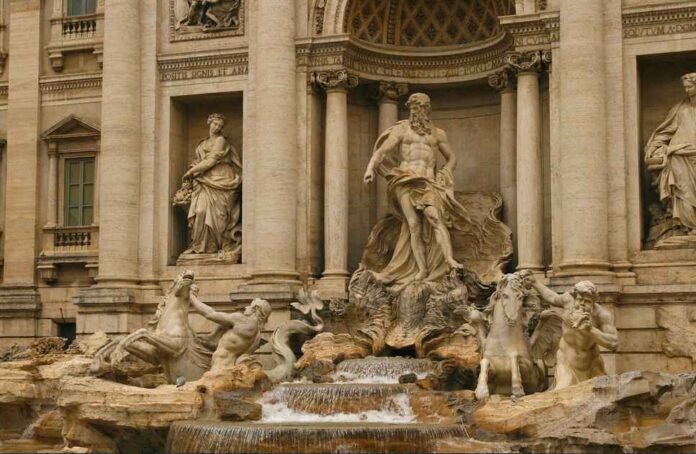In the realm of art, few subjects captivate us as deeply as the masterpieces of ancient civilizations. These works not only reflect the aesthetic sensibilities of their time but also embody the cultural, spiritual, and technological advancements of bygone eras. From the intricate frescoes of Pompeii to the majestic sculptures of Angkor Wat, ancient artz continues to inspire and intrigue us, offering a glimpse into the mysteries of human creativity and ingenuity. Ancient artz endures because it is human essence carved in stone, painted in earth, and cast in myth. It challenges us to see beyond the surface, to decode the devotion and genius of those who shaped history. As guardians of this legacy, we don’t just preserve art—we keep alive the curiosity, spirituality, and ingenuity that define humanity. Let these masterpieces not just be admired, but heard. Their secrets are our shared inheritance.
A Glimpse into the Mysteries of Ancient Artz
The allure of ancient artz lies in its ability to transport us to a world both familiar and foreign. The techniques used, the symbols employed, and the stories told through these works are a testament to the ingenuity and creativity of our ancestors. Whether it’s the vibrant colors of Egyptian tomb paintings or the imposing grandeur of Greek statues, each piece offers a window into the past, revealing the values, beliefs, and technological prowess of ancient societies.
Recent discoveries, like the 45,500-year-old pig painting in Sulawesi, Indonesia, rewrite our understanding of human creativity. These works weren’t idle doodles—they were acts of survival. Early humans ‘ life style painted animals to “hunt” them symbolically, believing art held power over reality. Similarly, the Venus of Willendorf, a 30,000-year-old figurine, wasn’t just a fertility symbol but a talisman for abundance in a harsh Ice Age world. This primal link between art and survival still resonates today, as modern creators channel raw emotion into their work.
Why Ancient Masterpieces Continue to Captivate Us
Ancient artz captivates us for several reasons. Firstly, it represents a tangible connection to our collective past, allowing us to understand the evolution of human culture and society. Secondly, these works often possess a timeless quality, transcending their historical context to speak to universal themes and emotions. Lastly, the techniques and materials used in ancient artz, though sometimes lost to time, continue to inspire modern artists and scientists alike. The transition from nomadic life to settled agriculture birthed new art forms. In Çatalhöyük, Turkey, 9,000-year-old murals depict volcanic eruptions and vultures circling headless corpses—a haunting blend of observation and myth.
The Mesopotamians, meanwhile, invented cylinder seals to stamp clay tablets, merging artistry with bureaucracy. These tiny carvings of gods and kings reveal how art became a tool of power, immortalising rulers like Hammurabi and his code of laws. The Indus Valley Civilization (3300–1300 BCE) left behind soapstone seals etched with unicorn-like creatures and undeciphered script. Were these trade licenses, religious tokens, or early currency? The mystery fuels debates, proving ancient artz thrives on unanswered questions.
The Secret Techniques Lost to Time
One of the most fascinating aspects of ancient artz is the array of techniques and materials used by artists. From the use of natural pigments like ochre and Tyrian purple to the development of sophisticated architectural methods, these techniques often remain shrouded in mystery. Recent advances in technology have begun to uncover some of these secrets, revealing the ingenuity and craftsmanship that went into creating these timeless masterpieces.
The Origins of Ancient Art
The earliest known artistic expressions date back to the Upper Paleolithic period, with examples like the ochre-marked shells from 500,000 BCE and the 40,000-year-old hand stencils in Indonesia’s Sulawesi caves. These early works suggest an innate human drive to create meaning through visual symbols. The development of cave paintings, such as those found in Lascaux (17,000 BCE) and Altamira (14,000 BCE), marked a significant milestone in artistic expression. These paintings not only depicted animals with remarkable anatomical accuracy but also used strategic placement and overlapping forms to create a sense of perspective.
Cave Paintings and Carvings
Cave paintings are more than just aesthetic expressions; they are messages from the past that offer insights into the lives and beliefs of early humans. The use of charcoal and iron oxides in these paintings demonstrates early mastery of materials and techniques. The Chauvet-Pont-d’Arc cave, with its monumental lions rendered in hematite-rich reds, showcases the artistic sophistication of Paleolithic artists.
The Evolution of Artistic Traditions Across Civilizations
As societies transitioned from nomadic to agrarian lifestyles, art became institutionalized. Mesopotamian cylinder seals (c. 3500 BCE) combined utilitarian function with mythological storytelling, while Egyptian tomb paintings codified hierarchical proportions to visualize cosmic order. The Minoans of Crete developed fresco techniques using lime plaster and mineral pigments like Egyptian blue, creating fluid marine motifs that celebrated their thalassocratic identity.
The Sacred Symbolism Hidden in Every Brushstroke
How Ancient Cultures Used Art for Spirituality
In ancient cultures, artistic creation was often inseparable from spiritual practice. Egyptian funerary artists preparing Nakhtamon’s tomb (c. 1200 BCE) ritually mixed pigments with binding media like gum arabic, believing the act infused ka (life force) into the images. The Tyrian purple dye extracted from Murex snails—requiring 12,000 mollusks per gram—was reserved for imperial Byzantine manuscripts, embodying divine authority through its chromatic intensity and rarity.
Hidden Messages and Codes
Analysis of Menna’s tomb (c. 1400 BCE) reveals deliberate alterations: a repositioned arm in an offering scene and shifted skin tones using blended ochres, suggesting evolving ritual meanings during the painting process. Mayan vase painters embedded glyphic puns—a jaguar (balam) depicted with maize imagery alluded to the ruler’s title B’alam Yaxuun Tihl—creating layered narratives accessible only to educated elites.
Mythology and Storytelling
Mythology played a central role in ancient artz, with stories and legends woven into masterpieces to convey moral, spiritual, and cultural values. Greek pottery, for example, often depicted scenes from mythology, while Indian temple carvings told stories from the Mahabharata and Ramayana. These narratives not only entertained but also educated and guided the viewer, reinforcing societal norms and beliefs.
The Lost Techniques That Made Ancient Artz Timeless
Mastering Natural Pigments
The use of natural pigments was a hallmark of ancient artz. From the vibrant blues of lapis lazuli to the deep reds of cinnabar, these pigments were often extracted from rare and exotic sources. The 4th-century BCE Greek technique of encaustic painting combined beeswax with lead-white pigment (cerussa), achieving luminous flesh tones through precise temperature control. Roman frescoists perfected the intonaco method, applying slaked lime plaster in giornate (daily sections) to chemically bond pigments like cinnabar into crystalline structures.
Precision Beyond Technology
The architectural achievements of ancient civilizations are equally impressive. The Parthenon’s curvature—a 4-inch rise over 228 feet—was calculated using Pythagorean harmonics, while Inca stonework achieved seismic resilience through trapezoidal doorways and interlocking ashlars cut with bronze tools. Recent multispectral imaging of Tutankhamun’s death mask revealed soldered gold layers thinned to 30 nanometers at the brow, comparable to modern nanotechnology.
Sculpting the Impossible
Sculpture was another medium where ancient artisans excelled. From the colossal statues of Easter Island to the intricate metalwork of the Benin bronzes, these creations demonstrate a mastery of materials and techniques that often seem impossible without modern tools. The use of lost-wax casting in ancient India and Africa allowed for the creation of complex bronze sculptures with remarkable detail and precision.
The Influence of the Cosmos on Ancient Artists
Aligning with the Stars
Astronomy played a significant role in the artistic vision of ancient cultures. Angkor Wat’s central tower aligns with the Draco constellation’s alpha star Thuban during the spring equinox, mirroring Egyptian pyramid orientations to circumpolar stars. The Nazca geoglyphs’ spider figure precisely maps the Orion constellation’s proportions, while Puebloan kiva murals chart Venus’ 584-day synodic cycle through sequential paint layers.
Lunar Cycles and Sacred Geometry in Artistic Design
Sacred geometry and the study of lunar cycles were integral to ancient artistic design. Islamic tilework at the Alhambra reveals recursive girih patterns based on the golden ratio (φ=1.618), generated through compass-and-straightedge constructions. Chinese Shan shui paintings employed logarithmic perspective grids derived from I Ching hexagrams, creating cosmological landscapes where mountains symbolize celestial axis mundi.
Celestial Inspiration
Myths of the heavens often inspired artistic vision, with celestial bodies and events influencing the themes and motifs of ancient artz. The depiction of solar deities in Egyptian art and the use of astronomical alignments in megalithic structures demonstrate how ancient cultures saw the cosmos as a source of divine inspiration and guidance.
Guardians of Time
Breathing Life into Ancient Artz
Restoring ancient artz is a delicate and challenging process. It requires not only technical skill but also a deep understanding of the original techniques and materials used. Recent advances in technology have provided new tools for restoration, from non-invasive imaging techniques to advanced materials analysis. These tools help conservators to preserve the integrity of the artwork while uncovering hidden layers and secrets.
What Modern Technology Reveals
Modern technology has revolutionized our understanding of ancient artz. Portable XRF spectrometers used on the Tomb of Nakhtamon detected trace amounts of pararealgar (AsS) in Ramses II’s headdress, indicating later restoration during the 19th Dynasty. Reflectance transformation imaging (RTI) of the Lascaux caves exposed previously invisible charcoal underdrawings, revealing compositional changes where aurochs were painted over older ibex figures.
The Mystery of Lost Masterpieces
Despite the many masterpieces that have survived, much of ancient art has been lost to time. The destruction of the Library of Alexandria, the ravages of the Spanish Conquest, and natural disasters have all contributed to the disappearance of countless works. However, advances in archaeology and technology continue to uncover new pieces, offering fresh insights into the artistic achievements of ancient civilizations.
Why Ancient Artz Still Matters Today
The Lessons We Can Learn from the Past
Ancient artz offers numerous lessons for the present. It demonstrates the importance of craftsmanship, the power of symbolism, and the enduring impact of art on society. By studying ancient techniques and materials, modern artists can also gain new perspectives on creativity and innovation.
How Ancient Techniques Inspire Modern Artists
Contemporary artists like Anish Kapoor utilize Tyrian purple’s chromatic legacy in site-specific installations, while conservation scientists employ Maya blue’s nanostructure principles to develop UV-resistant architectural coatings. The British Museum’s Project Rosetta uses machine learning to cross-reference 100,000+ pigment samples, creating a predictive model of ancient trade routes based on trace element signatures.
The Future of Ancient Artz Studies
As quantum computing begins decrypting undeciphered scripts like Linear A and the Indus Valley symbols, we approach a new frontier in understanding humanity’s oldest visual languages. These timeless masterpieces endure not as relics but as active dialogues between past and present creativity—a testament to art’s role as civilization’s ultimate continuum.
Conclusion
Ancient artz is more than just a collection of artefacts from the past; it is a living legacy that continues to inspire, educate, and captivate us today. Through its techniques, symbolism, and cosmic inspirations, ancient art offers a window into the human experience, revealing our shared aspirations, fears, and creative potential. As we continue to uncover the secrets of ancient art, we are reminded of the enduring power of art to transcend time and connect us across cultures and centuries.
What makes these works timeless isn’t just their beauty, but their audacity. Imagine the grit of Egyptian artisans hauling limestone under a blistering sun to build pyramids that would outlive empires. Picture Maya scribes grinding cochineal insects to create crimson inks for also sacred codices, knowing their words would speak to gods and futures they’d never see. These creators didn’t just make art—they defied mortality.

